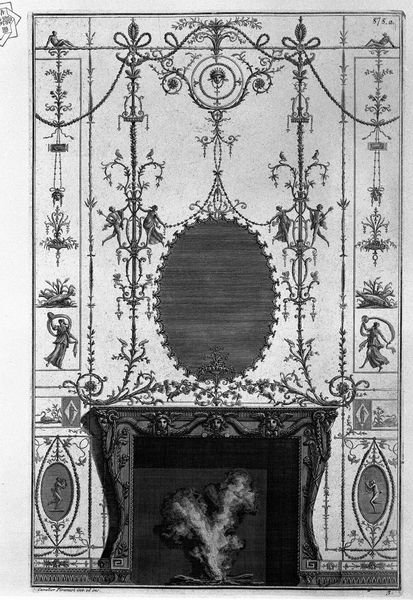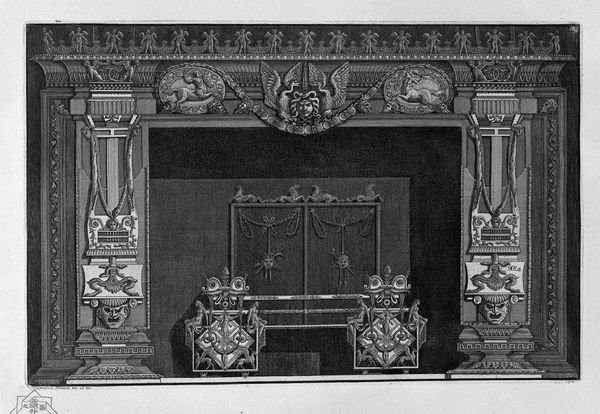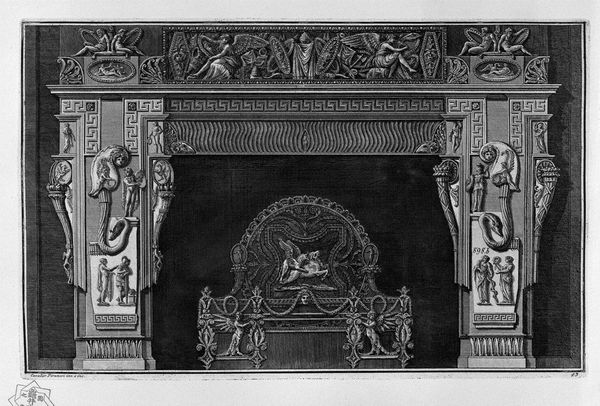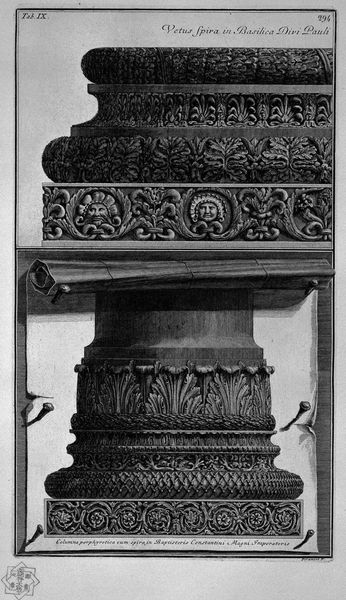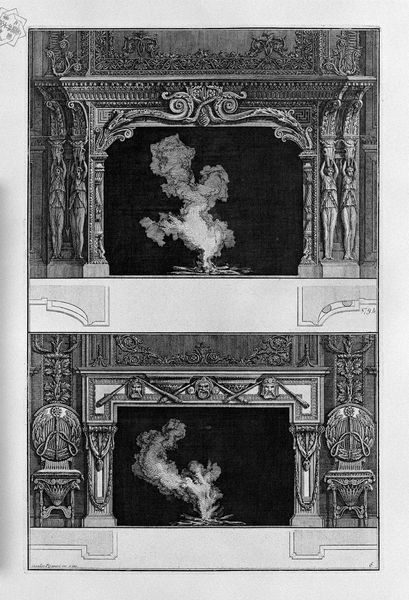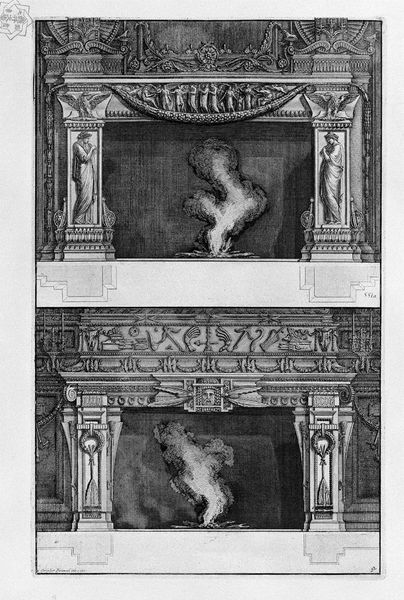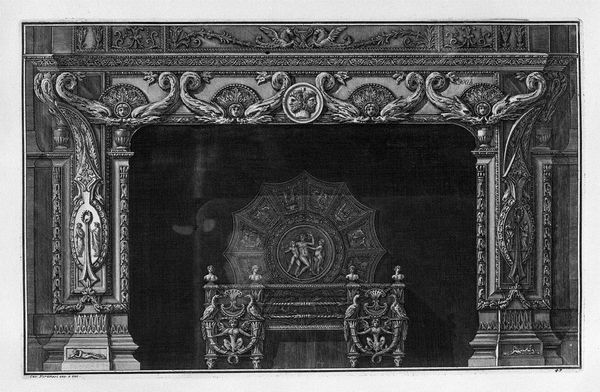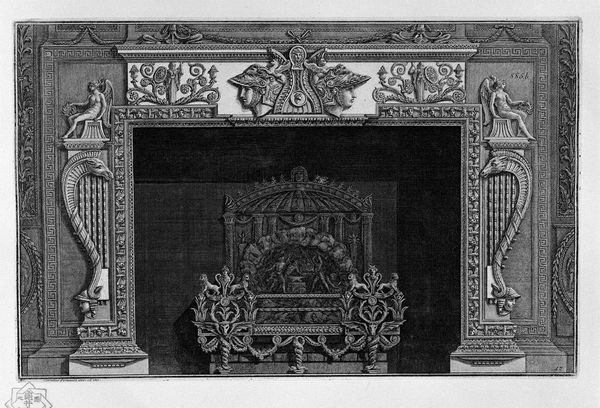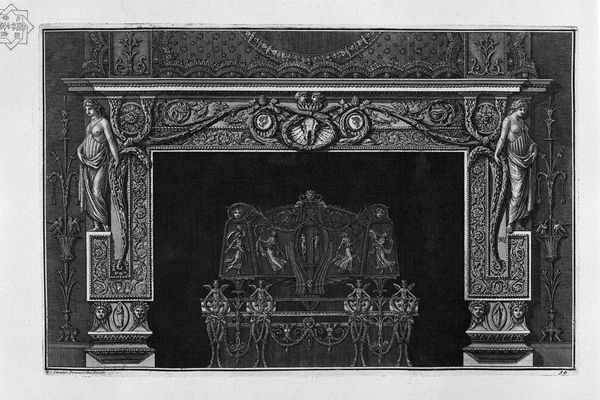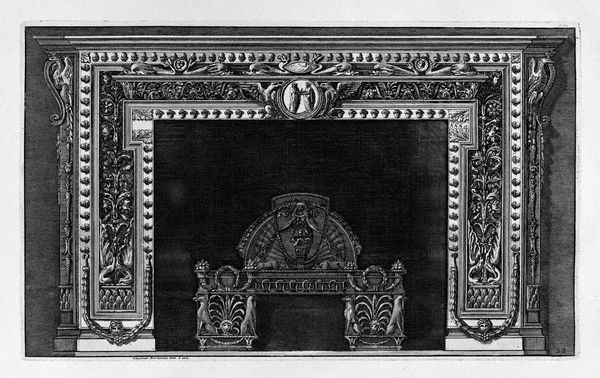
Fireplace: in the frieze, sacrificing two fauns, including winged genii; high on the wall, the figure of a woman lying in a shell
0:00
0:00
print, engraving, architecture
#
baroque
# print
#
old engraving style
#
charcoal drawing
#
history-painting
#
engraving
#
architecture
Copyright: Public domain
Curator: This print by Giovanni Battista Piranesi depicts a fireplace design, titled "Fireplace: in the frieze, sacrificing two fauns, including winged genii; high on the wall, the figure of a woman lying in a shell." It presents an elaborate composition, full of ornamentation. What’s your first impression? Editor: Chaotic, yet controlled. My eye doesn't quite know where to land; there's a density to the mark-making that nearly overwhelms the composition. I immediately think about the sheer labor required to produce a print with such intricate detail. Curator: Exactly! Consider the means of production. Piranesi wasn’t just ideating; he was deeply involved in the printmaking process itself. The dense crosshatching speaks to countless hours of painstaking labor, pushing the boundaries between printmaking and draftsmanship. Editor: And beyond that, the social context is fascinating. This isn’t just about Piranesi’s individual genius; it’s about patronage and the demands of elite consumers. Note the location: the palace of Lord Exeter in England. The architectural designs themselves catered to an aristocratic taste, broadcasting wealth and status through refined consumption. Curator: Right, we see a statement of power and taste. Piranesi shrewdly capitalized on the fashion for classical antiquity that swept through Europe in the 18th century. Museums and the art market helped spread interest in these historical motifs. Notice how the frieze features a bacchanalian scene with sacrificing fauns, set against a backdrop featuring a goddess reclining in a shell. The layering of symbols clearly evoked an aspirational and cultivated lifestyle for the upper class. Editor: To me, this work illustrates how visual imagery was weaponized by political elites to legitimize their social dominance. This elaborate fireplace transcends function, serving as a public performance for wealthy and powerful elites. It reinforces classical artistic traditions that defined luxury and prestige. Curator: Yes! These images offer us invaluable insights into the values of that society, reflected back at them through decorative schemes within their own homes. It becomes very clear how powerful material culture could be as a political tool. Editor: Precisely. Looking closely helps one appreciate the confluence of production, consumption, labor, and status so powerfully evoked in Piranesi’s prints. Curator: And hopefully this will spur our listeners to view the broader context that informed these decorative prints—understanding them not merely as documents of designs, but complex embodiments of power and influence within their time.
Comments
No comments
Be the first to comment and join the conversation on the ultimate creative platform.

